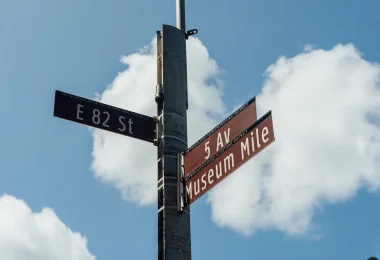Introduction to Breast Implant Removal
With time, our priorities and desires change. This is a major reason for women who have earlier opted for breast implants to consider breast implant removal. Furthermore, there are cases where implants are damaged or need to be updated, so removal is needed. If you have been contemplating your options for breast implant removal in New York City, consider contacting the practice of Dr. Michelle Copeland and Dr. Libby Copeland-Halperin. Our expert surgeons have the education and training to help patients feel and look their best. Please read below for more information.

What is a Breast Implant Removal?
Breast implant removal is a cosmetic procedure for removing breast implants. Breast implants are not permanent, so they will likely need to be revised or removed at some point. Some patients may seek out this procedure due to dissatisfaction with their implants’ size, shape, or appearance. Sometimes, implant damage, such as a leak or capsular contracture, can cause the need for an implant removal or exchange.
What Are the Benefits of Breast Implant Removal?
Our NYC patients who received a breast implant removal have reported some of the following benefits:
- Boost in self-esteem
- Improved comfort
- Reduced pressure on the upper back
- Relief from capsular contracture
- Relief from implant leakage
- Restoration of natural bosom
Who Are the Best Candidates For Breast Implant Removal?
The practice of Dr. Michelle Copeland and Dr. Libby Copeland-Halperin is experienced and well-known for their breast procedures, including breast implant removal. The best candidates for breast implant removal at their facility in New York City are those individuals who:
- Have capsular contracture
- Have implant leakage
- Are they bothered by their implants
- Have upper back ache due to heavy breasts
- Want their natural bosom back
- Maintain realistic expectations
- Have no underlying medical conditions
- Are non-smokers
Your Breast Implant Removal Surgery journey
What’s the First Step?
The first step for breast implant removal in the greater New York area is to schedule a consultation at the practice of Dr. Michelle Copeland and Dr. Libby Copeland-Halperin. During this initial appointment, you will have the opportunity to discuss your medical history, your aesthetic and functional goals for the surgery, and your expectations. Your surgeon will then do a detailed physical exam of your breast area and take stock of the condition of your implants, deciding the technique to be used for incision and removal. They will outline the procedure to you with its associated risks and benefits so that you can decide if this is the right fit for you.
If you both agree to proceed with the procedure, your surgeon will create a surgical plan that you can then take to our expert team, who will provide a detailed, written quote, schedule your treatment, discuss payment and financing options, and receive any pre-operative instructions
What to Expect on the Day of Breast Implant Removal Surgery
On the day of your breast implant removal surgery at the practice of Dr. Michelle Copeland and Dr. Libby Copeland-Halperin, you will be greeted by your surgeon and their team, who will help you get settled in the procedure room and review your surgical plan in case there are any new questions and/or concerns. Finally, a board-certified anesthesiologist will administer twilight IV anesthesia for your comfort during the procedure.
Once you are sedated, your surgeon will make incisions to gain access to the breast implants. The type and location of the incisions will depend on various factors, such as the type and location of your implants and the shape of your upper chest area. Once the implants are extracted, the surgeon will carefully close the incisions with sutures.
The procedure can take anywhere from one to three hours.
Your guide to post-Breast Implant Removal Surgery care
Breast Implant Removal Recovery
After surgery, you will be monitored in a recovery room by our staff to make sure all sedation wears off. Patients are recommended to have a family member or a friend drive them home, as sedation can take time to resolve fully.
Most patients report initial discomfort, swelling, and bruising. For optimal healing and recovery, it is important to follow post-operative instructions, including wearing a supportive bra, taking prescribed medications, and attending follow-up appointments.
Most patients take about a week off from work following breast implant removal surgery. It may take between six months to a year to fully heal and have your breasts settle in their final position.

How Much Does Breast Implant Removal Cost in New York City, NY?
The cost of breast implant removal in New York City will vary based on the specific techniques being used, the operating room and anesthesia fees, and many other factors. The fastest way to arrive at a cost is to schedule your initial consultation so that a surgical plan can be drafted and priced out.

Why Choose Dr. Michelle Copeland and Dr. Libby Copeland-Halperin?
The practice of Dr. Michelle Copeland and Dr. Libby Copeland-Halperin should be your go-to for your breast implant removal in New York City, in addition to their medical accomplishments. They are known for their empathy and kindness towards their patients as they deliver their expertise in sculpting your aesthetics. Dr. Michelle Copeland is the first woman plastic surgeon with a Harvard doctorate in Medicine and Dentistry. She has published numerous articles and presented her techniques internationally. She is an Assistant Clinical Professor of Surgery at the Icahn School of Medicine at Mount Sinai and an attending surgeon at the Mount Sinai Medical Center.
Dr. Libby Copeland-Halperin has a wealth of experience, including advanced training in microsurgery at the Brigham and Women’s Hospital with a focus on breast reconstruction. She brings a humanistic dimension to plastic surgery and enjoys helping patients achieve their cosmetic, aesthetic, and reconstructive goals through a combination of surgical and non-surgical techniques. Dr. Libby Copeland-Halperin is board-certified in general surgery and board-eligible for plastic surgery. In addition to seeing patients at 1001 Fifth Avenue, Dr. Copeland-Halperin also operates at Lenox Hill Hospital and Manhattan Eye, Ear, and Throat Hospital, affiliates of Northwell Health, where she is involved in teaching residents.
Both doctors work with an international clientele, drawing patients from Asia, the Middle East, and Europe. Whether it’s a virtual consultation or in person, they will answer all of your questions, including options, costs, recovery, and all aspects of treatment for surgical procedures such as breast augmentation, breast reduction, liposuction, and rhinoplasty, as well as non-surgical treatments like Botox, Kybella, fillers, and other non-invasive techniques.
Breast Implant Removal FAQ’S
Schedule Your Consultation
Contact us
If you have achieved the utility you wanted from your breast implants and are looking for a change, consider scheduling a consultation at the practice of Dr. Michelle Copeland and Dr. Libby Copeland-Halperin to learn more about breast implant removal in New York City. To schedule your one-on-one consultation, please contact our office to request an appointment, and a helpful member of our team will reach out to you.